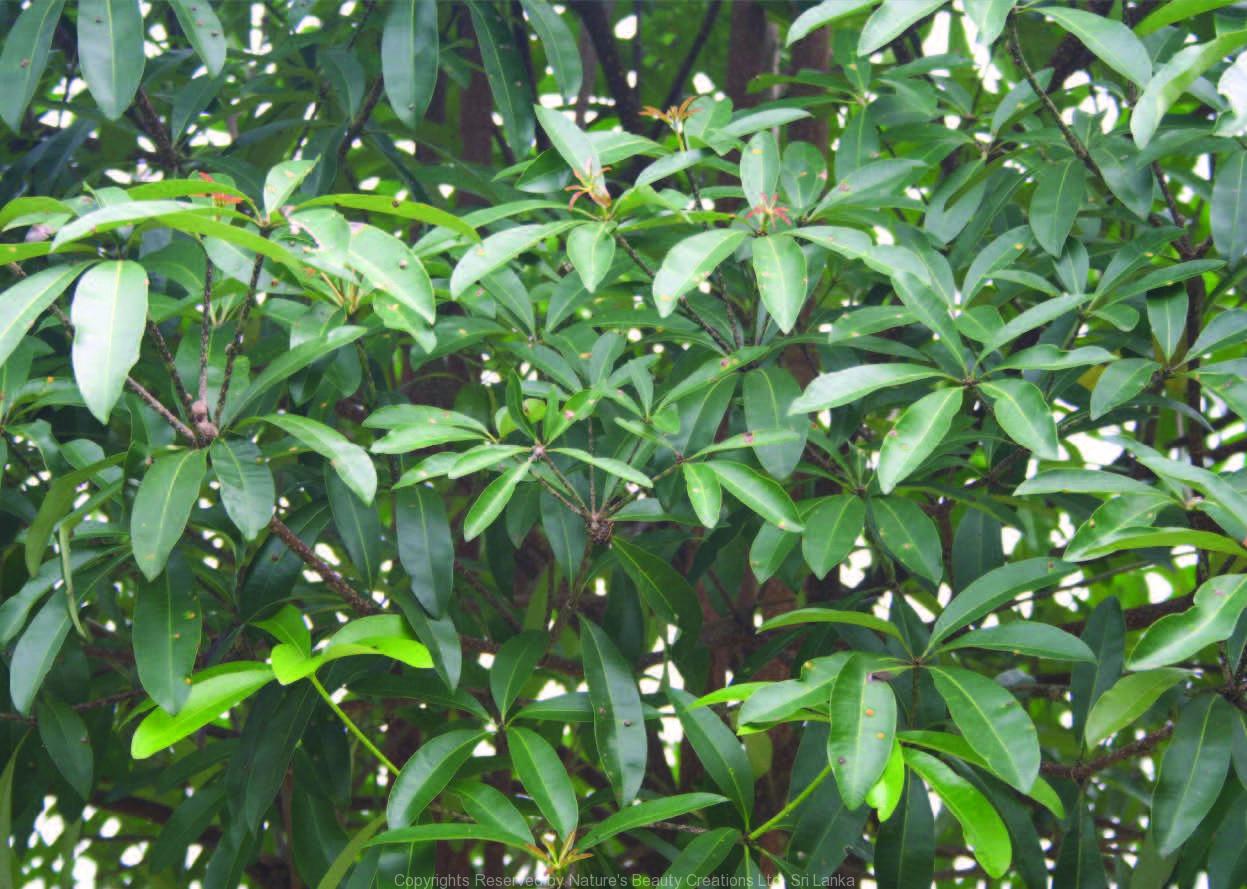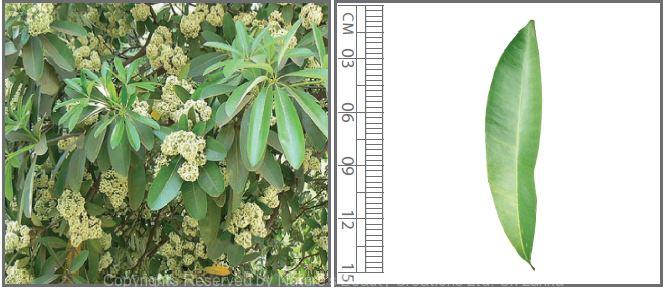

Traditional Knowledge
Useful plant parts :
Leaf, root, bark and stem
Uses in traditional medicine :
- Decoction of the bark is used as a febrifuge, especially malarial fever and to treat chronic diarrhoea and dysentery
- Roasted and powdered tender leaves are used for ulcers with foul discharge
- Decoction of the leaves are used for beriberi and congestion of the liver
- Milky juice is used to treat ulcers, rheumatic pains, toothache and earache
Scientific Research
Chemical constituents:
Indole alkaloids: scholarine and its derivatives, Na-methylburnamine and vallesamine Nb-oxide from leaves
Bioactivity :
Ethanol extract of bark: antifertility activity; methanol extract of leaves: antibacterial; alkaloid fraction: enhances the effect of radiation and results in disease-free survival in cancer treatments, antitussive, antiasthmatic, expectorant
Clinical:
Decoction of bark relieves elevated Diastolic Blood Pressure (DBP) and somatic symptoms
References : Akhtar, M. S., (2002), Hypoglycaemic Effect of Powdered Alstonia Scholaris (Satona), The Professional Medical Journal, 9(3), 268-271. Banerji, A. and Siddhanta, A. K., (1981), Scholarine: An indole alkaloid of Alstonia scholaris, Phytochemistry, 20(3), 540-542. Bhogayata, K. et al., (2009), A clinical evaluation of Saptaparna (Alstonia scholaris L., R. Br.) on Essential Hypertension, Ayu, 30(3), 318-322. Gupta, R. S. et al., (2002), Effect of Alstonia scholaris bark extract on testicular function of Wistar rats, Asian Journal of Andrology, 4, 175-178. Jagetia, G. C. and Baliga, M. S., (2003), Treatment with Alstonia scholaris Enhances Radiosensitivity In vitro and In vivo, Cancer Biotherapy & Radiopharmaceuticals, 18(6), 917-929. Khyade, M. S. and Vaikos, N. P., (2009), Phytochemical and antibacterial properties of leaves of Alstonia scholaris R. Br., African Journal of Biotechnology, 8(22), 6434-6436. Misra, C. S. et al., (2011), A comparative study on phytochemical screening and antibacterial activity of roots of Alstonia scholaris with the roots, leaves and stem bark, International Journal of Research in Phytochemistry & Pharmacology, 1(2), 77-82. Shang, J. H. et al., (2010), Pharmacological evaluation of Alstonia scholaris: anti-tussive, anti-asthmatic and expectorant activities, J Ethnopharmacol, 129(3), 293-8. Yamauchia, T. et al., (1990), Alkaloids from the leaves of Alstonia scholaris in Taiwan, Thailand, Indonesia and the Philippines, Phytochem- istry, 29(11), 3547–3552.
Copyrights Reserved By
Natures Beauty Creations



